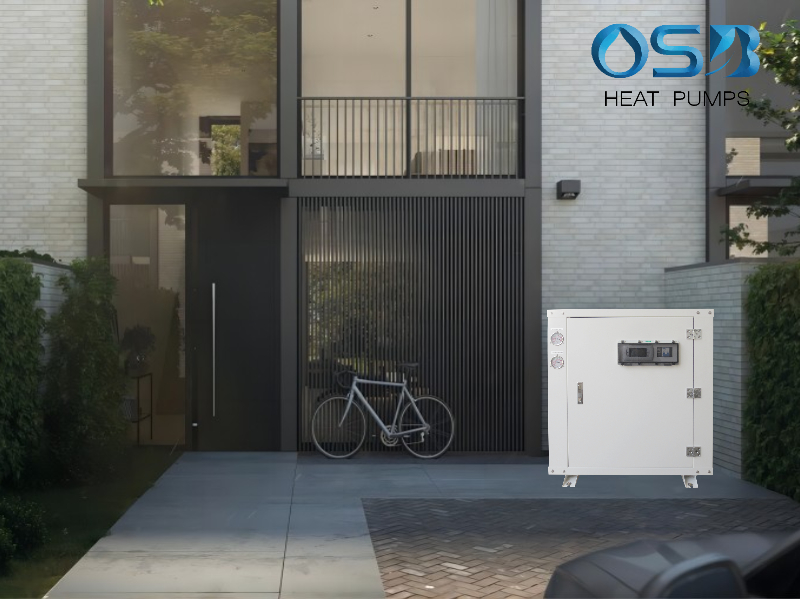Like all other heat pumps, a brine/water heat pump works on the same principle: First, thermal energy is extracted from the ground and then transferred to the refrigerant. This evaporates and is additionally compressed using a compressor. This not only increases its pressure, but also its temperature. The resulting heat is absorbed by a heat exchanger (condenser) and passed on to the heating system. You can learn in detail about how this process works in the article How the brine/water heat pump works.
In principle, geothermal heat can be extracted via a ground source heat pump in two ways: either via geothermal collectors that are laid close to the surface or via geothermal probes that penetrate down to 100 meters into the earth. We will look at both versions in the following sections.
Geothermal collectors are laid underground
To extract the geothermal heat, a pipe system is laid horizontally and in serpentine form below the frost line. The depth is around one to two meters below the surface of the lawn or soil. A brine medium made of frost-proof liquid circulates in the pipe system, which absorbs the thermal energy and transfers it to the heat exchanger. The size of the collector area required depends, among other things, on the heat demand of the building in question. In practice, it is 1.5 to 2 times the area that needs to be heated. Geothermal collectors absorb thermal energy from near the surface. The energy is provided by solar radiation and rainwater. Consequently, the condition of the ground plays a decisive role in the energy yield of the collectors. It is important that the area above the pipe system is not asphalted or built upon. You can read more about what needs to be taken into account when laying the geothermal collectors in the article Geothermal collectors for brine/water heat pumps.
Geothermal probes extract heat from deeper layers of the earth
An alternative to geothermal collectors are probes. With the help of boreholes, the geothermal probes are sunk vertically or at an angle into the earth. A brine medium also flows through it, that absorbs the geothermal heat at a depth of 40 to 100 meters and passes it on to a heat exchanger. From a depth of around ten meters, the temperature remains constant all year round, so geothermal probes work efficiently even at very low outside temperatures. They also require little space when compared to geothermal collectors, and can also be used for cooling in the summer. The depth of the borehole also depends on the heat demand and thermal conductivity of the ground. As several groundwater-bearing strata are penetrated in a borehole of up to 100 metres, permits must always be obtained for drilling boreholes.
Post time: Mar-14-2023


